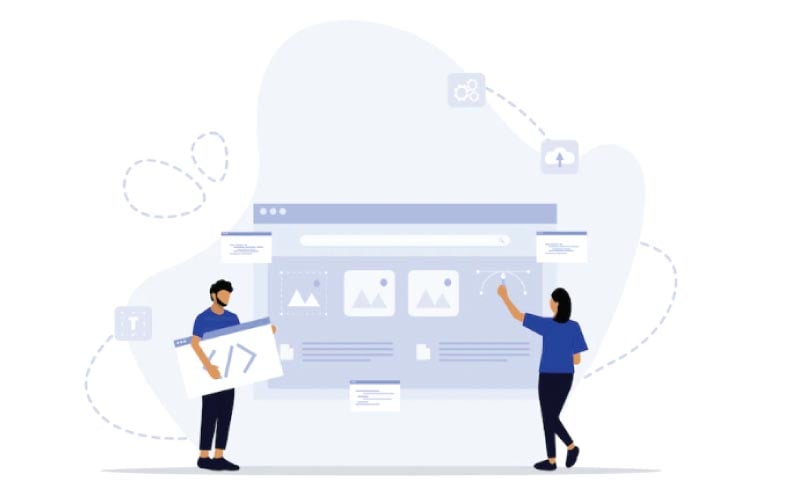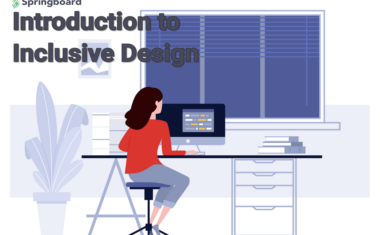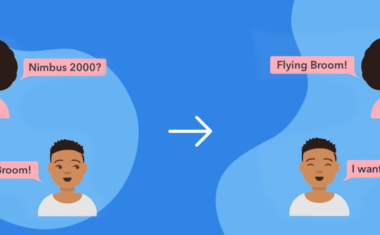Free UX Design Course
Dive into UX design with our free starter course. Transform your creative ideas into user-friendly solutions.
Oftentimes, the difference between a smooth digital experience and an infuriating one is a matter of user experience design. UX designers as an important part of every design team. They are responsible for building creative design solutions for various tools, including the layouts of product interfaces, mobile apps, and websites, ensuring that you can easily find what you’re looking for.
User design is now an integral part of product development and user research, and the demand for UX designers is growing proportionately. LinkedIn reports that the number of full-time UX designers being hired quintupled between 2019 and 2020. And with such high demand, salaries are rising too. Glassdoor ranks UX designer 24th in their list of top paying jobs in the US, with a median salary of $97,000.
As an emerging field, user experience design welcomes career transitioners and fresh graduates. Create job alert messages and watch the prospects roll in! But it can seem daunting to break into the field if you’re new. Which design tools do you need to master – Adobe or other proprietary brands? Do you need a degree to land a full-time position or will equivalent practical experience do? Which course will give you the best experience? Should you join a design team or work on your own full-time?
That’s why we’ve created this guide. Below, we’ll detail seven entry-level UX designer jobs, the full range of skills you need, and how you can get professional experience land a full-time position in the field.
What Is UX or UI Design?
The Nielsen Norman Group defines UX UI design as creating user experiences that encompass all aspects of the end-user interaction with the company, its services, and its products. User design is about meticulously designing how the customer uses, interacts with, and feels about the product, creating the best experience for them. They conduct user research and use graphic design principles and visual design fundamentals to create better experiences and engage consumers. They use product design tools like the full range of Adobe Creative Suite or Adobe XD to make sure everyone has the best experience possible.


Become A UX Designer. Land a Job or Your Money Back.
Master Adobe XD, Figma, and Sketch. Work 1:1 with an industry mentor. Build a portfolio. Land a job — or your money back.
What Does a UX Designer Do?
In short, UX designers create products such as websites, mobile apps, and web apps, using an iterative process rooted in design thinking, a user-centric problem-solving approach that drives a continuous cycle of experimentation, validation, and refinement. They work full-time or part-time, and can work as freelance professionals as well. This includes a variety of tasks such as:
- Identifying and defining problems
- Product design
- User research and tailoring products according to user research
- Ideation using affinity maps, empathy maps, user personas, and journey maps
- User interface design
- User experience testing
- Information architecture
- Sketching, wireframing, and prototyping
- Using visual design tools
- Knowledge of graphic design principles and creative design solutions
Depending on the organization’s size, industry, and the nature of the business, these roles can be performed by one person or a team of UX professionals, product managers and designers.
Entry-Level UX Designer Jobs: A Complete Guide
User experience, though an emerging field, isn’t a monolith. Several specializations within user experience design can be an excellent entry point to a successful career in the field. Here is a list of the top seven.
Get To Know Other Design Students
Sadie Rubio
UX Designer And Researcher at Lumea
Xiomara Romine
UX/UI Designer at FutureSight
Aisha Butt
UX Associate at Meta
UX Design Intern
An internship is the best segue into any career and one of the best entry-level UX designer jobs. It allows fresh graduates or those transitioning to a user experience design career to get a lay of the land, learn the design process, and experience working in the field while building a solid online portfolio.
Roles and Responsibilities
An intern’s roles and responsibilities typically involve a little bit of everything in the design organization. As a intern, you might work with the researchers to help conduct surveys/interviews/usability studies, collect data, analyze them and build reports. You might also support senior designers by thinking of design ideas, and help build wireframes and prototypes. Internships are also an excellent opportunity to find mentors and build your network within the industry. You’ll probably use Adobe Creative Suite or other proprietary brands of product design software.
Average Salary
The average salary of a user design intern is $36,011, according to Indeed. The hourly rates for these roles are around $20.
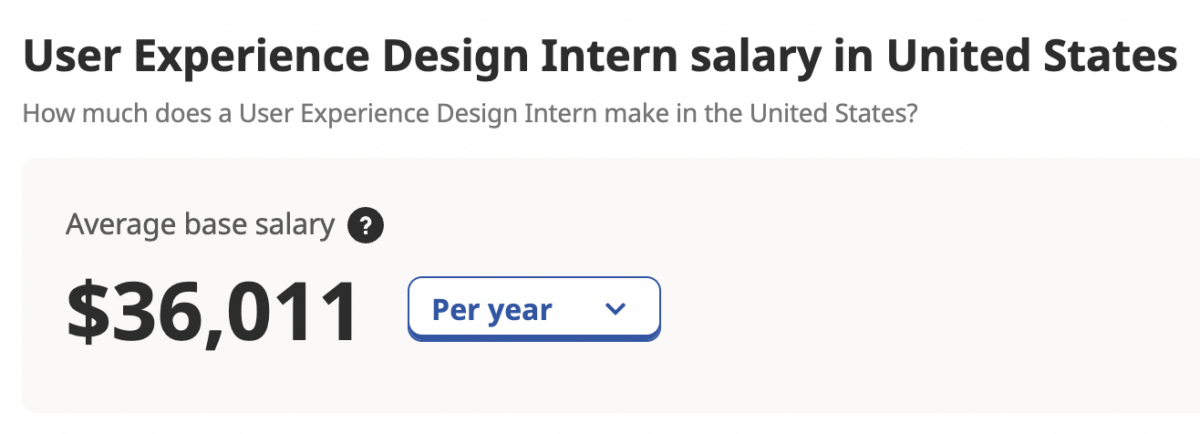
General Requirements
As a full-time user experience intern, you would not be expected to have prior work experience in the field. However, most prestigious internships are highly competitive. Therefore, it helps to have a degree in arts, graphic design, human-machine interaction, or an equivalent qualification such as a certificate or design bootcamp, understanding of foundational concepts in product design, and some experience with UX design tools such as the Adobe Creative Suite, Figma, and Sketch. They may need a bachelor’s degree in design or a related field.
Junior UX Designer
While internships are short-term assignments, the junior UX designer role is a permanent full-time position offered to those newly entering the field. This entry-level user experience designer job provides an opportunity to work as part of a UX team creating products to solve real-world problems and conducting user research. Job descriptions can be varied. You may need a bachelor’s degree in design or a related field.
Roles and Responsibilities
A typical full-time junior designer in the field of user experience would assist senior designers, and team members create great products. This would include collaborating with UX researchers to build journey maps during UX research along with personas, collect feedback and analyze them, creates wireframes and prototypes, coordinate usability testing initiatives, and write documentation for hand-offs to front-end developers.
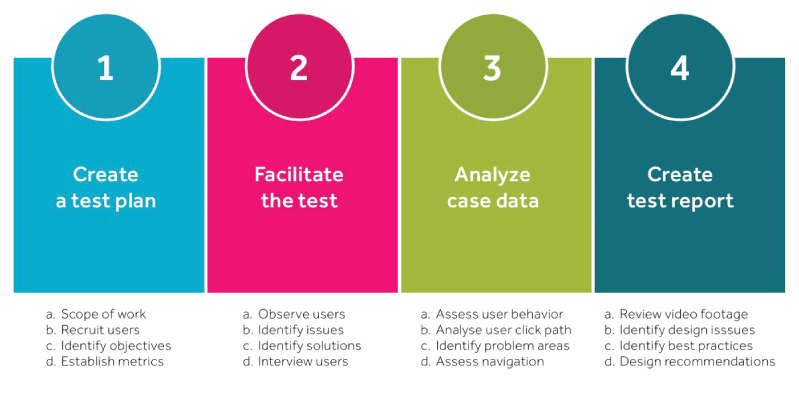
Average Salary
Talent.com finds the average full-time junior UX designer salary of $81,647 in the US. However, based on design experience, type of organization, location, etc., this can range from $68,250 to $119,138.

General Requirements
Full-time junior designers are expected to understand the landscape, even if they don’t have extensive experience in the field. A junior position in design would demand skills in:
- Design thinking and user-centered design
- Qualitative and quantitative research
- Visual design tools such as Figma, Sketch, and Adobe XD or Adobe Creative Suite
- Usability testing
- Communication, presentation, and collaboration in user research
- Knowledge of graphic design
UX Researcher or Usability Researcher
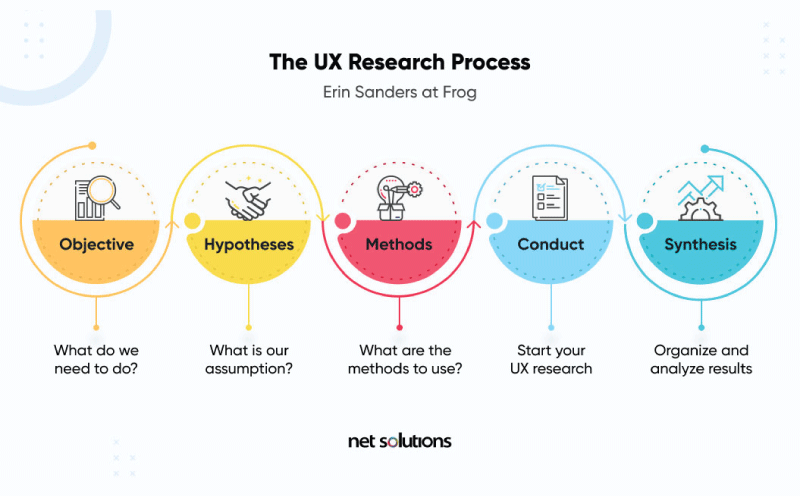
A UX researcher, though not a traditional designer, is a fundamental part of human-centered design. They bring the understanding of the user that is critical to creating great products. They study customers and users closely to understand their needs and wants. They also work closely with designers and developers to meet the user’s needs and wants. LinkedIn ranks the role among the 25 fastest-growing jobs in the US. You may need a bachelor’s degree in research or a related field.
Roles and Responsibilities
A UX researcher uses various research methods such as surveys, interviews, focus groups, and observation to understand user behavior. They are responsible for researching before the design begins, coming up with new ideas for design solutions, validating the design, prototypes, and concepts when they’re complete, and iterating for improvements. They champion customer advocacy within the organization.
Average Salary
The average salary of a UX researcher in the US is $100,400 in the US with a bachelor’s degree in research or a related field. As you gain more professional experience and specialization, this can go up to $230,000.
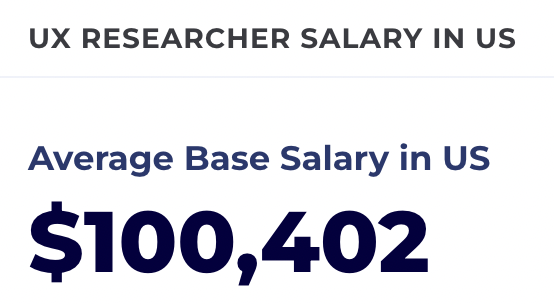
General Requirements
As a somewhat academic role, most UX researcher positions expect a bachelor’s degree in research, computer science, or related fields such as human-computer interaction, psychology, or information science. In addition, these roles also demand skills in qualitative and quantitative research methods, usability tests, surveys and interviews, data analysis, testing designs for effectiveness, communication, and presentation.
Interaction Designer

While a UX designer is responsible for the user’s overall experience with the product, interaction designers are concerned with how the user interacts with it. Sometimes, this role might be combined with that of a UI designer. You may need a bachelor’s degree in design, research, computer science or a related field.
Roles and Responsibilities
The responsibilities of an interaction designer include
- Creating user journeys and workflows
- Collaborating with engineers, writers, and product managers to ensure the intent of the design translates into execution
- Building information architecture
- Ensuring responsive design
- Designing individual elements of interactions such as menus, buttons, forms, transactions, etc. that engage consumers
- Knowledge of design tools
Average Salary
The average interaction designer salary in the US is $103,359, according to Comparably. Based on experience, seniority, responsibilities, job postings, and location, this can go up to $190,000.
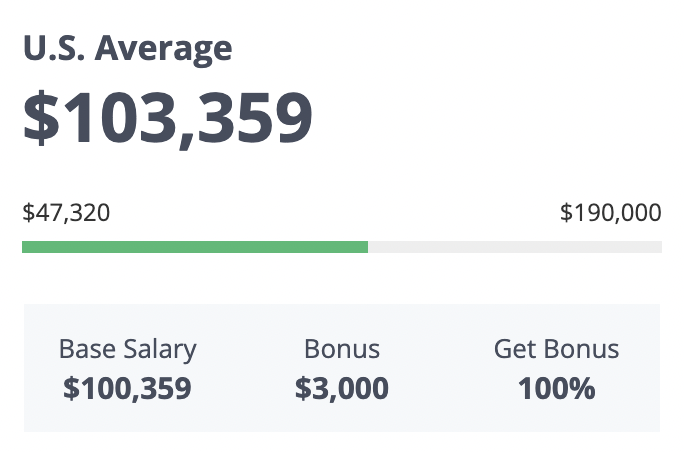
General Requirements
The skills expected for an entry-level full-time job in interaction design are similar to that of a user experience designer. A strong understanding of information architecture, task flows, user journeys, and technology trends can be a bonus.
Visual Designer
As the name suggests, a visual designer is responsible for how the product looks. Traditionally, visual designers belonged to the marketing teams creating collaterals such as brochures, presentations, and advertisements. They carry similar technical skills and approaches to digital design or a related field.
Roles and Responsibilities
The primary responsibility of a visual designer is to create the website’s graphical elements, such as banners, images, icons, typography, and illustrations. Within the UX design team, they also uphold consistent brand identity, adhering to guidelines, ensuring accessibility, interactivity, and responsiveness.
Average Salary
According to BuiltIn, the average salary of a visual designer is $74,098, going up to $135,000.
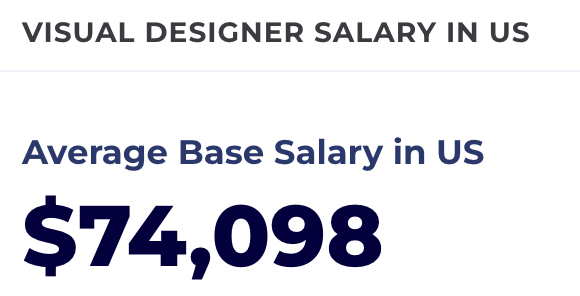
General Requirements
A full-time visual designer often uses a different toolkit from that of UX designers. So, this role needs proficiency in design tools such as Adobe Photoshop, Illustrator, and After Effects. It demands a strong understanding of visual design principles such as balance, contrast, composition, scale, color theory, and movement. It helps if you also have a grasp of branding and online communication. You may need a bachelor’s degree in design or a related field.
Information Architect
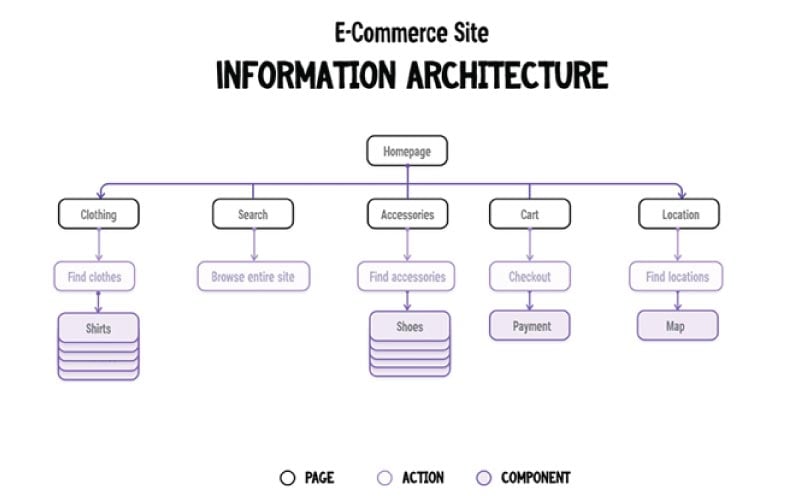
Information architects combine skills in design and content. They make decisions around how information is structured and presented in a way that’s easy to find and understand.
Roles and Responsibilities
A full-time information architect’s primary responsibility is to improve the discoverability, accessibility, and usefulness of information presented on the product. They work closely with writers and designers to ensure that the information is communicated clearly to the user. They also create information flows and design process diagrams. You may need a bachelor’s degree in Computer Science or a related field.
Average Salary
The average salary of a full-time information architect is $149,550, according to Talent.com.
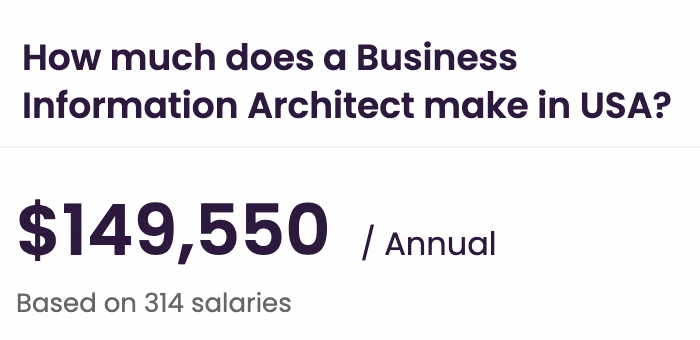
General Requirements
An information architect must understand best practices across user experience, content strategy, and content design. They also need skills in creating user flows, wireframing, and prototyping.
Product Designer
A product designer is a UX designer who takes complete responsibility for a part of the product. This role combines the skills of a business analyst, user experience designer, and product manager.
Roles and Responsibilities
A product designer is responsible for designing and redesigning user experiences within a product. They work with researchers, information architects, UI designers, visual designers, and writers to make the product coherent and functional. They ideate and prototype solutions and take them to user testing regularly. They also take responsibility for the accessibility and inclusivity of the product and use design tools when required.
Average Salary
Product designers earn an average salary of $90,414, according to Indeed. As someone taking ownership of the product, the responsibilities grow rapidly, as does the salary. Lead product designers with 5-8 years of design experience can earn as much as $150,000.

General Requirements
Interpersonal skills in collaboration, documentation, consensus building, and project management are critical for a product designer. They need at least a basic understanding of the entire spectrum of UX design, including research, information architecture, prototyping, design, and testing. It is a bonus if they also know about front-end development.
Benefits of a Career in UX Design
As an emerging field, UX design offers excellent job opportunities for fresh graduates and experienced professionals transitioning into the field. It allows creative individuals to create products and experiences that will shape the future of human-computer interaction. And there’s more.
Job Security Due to High Demand
Several studies show UX designer as one of the most sought-after roles across industries, and there are barely enough trained UX designers to fill all these roles. As the demand grows, trained UX professionals will be secure in their current positions, with opportunities to explore better, more challenging, and high-paying ones.
Well-Paying Field Which Doesn’t Require a Four-Year Degree
The average salary of a UX designer in the US is $97,000—well above the average salary in the US. In high-demand locations like San Francisco and New York, it is common to be offered six-figure salaries even for entry-level positions. Yet, UX design doesn’t demand a four-year degree. You can be self-taught or have built your skills by completing a UX design bootcamp or a certificate program. As long as you can demonstrate your skills, you can land a UX design job today.
Simplify People’s Relationship With Technology
A UX designer plays a fundamental role in shaping the future in a world where most everyday activities—from setting the alarm, ordering groceries, or making a bank transfer—are increasingly being done digitally. They create products that simplify people’s relationships with technology, making them more accessible and inclusive.
Use Your Creative Skills To Solve Problems
UX design can also be extremely rewarding because it satisfies the human need to be creative and solve problems. Every day can be a new challenge, which can be solved using one’s creativity, design skills, and an understanding of human psychology. In specialized roles such as user interface designer, interaction designer, and user researcher, you can take a deeper interest in a specific problem area and solve them effectively.
Resources To Find Entry-Level UX Designer Jobs
You can begin your UX design career by either choosing full-time employment at an organization or as a freelancer working on multiple projects independently. Here’s how you can plan your job search for each.
Job Boards
There are several job boards—such as LinkedIn, Glassdoor, Angelist, and Dribble—where organizations regularly list open jobs in user experience design. Job descriptions will indicate the nature of the role, qualifications and skills required, and sometimes even salaries offered.
Marketplaces
For freelance opportunities in UX design, look in marketplaces such as Freelancer, UpWork, Fiverr, and Toptal. There are also designer-specific marketplaces such as Envato Studio and 99designs.
What Can I Do To Boost My Odds of Getting a Full-time Job as a UX Designer?
Finding a job as a full-time UX designer may take some time, but you can boost your chances.
1. Use Keywords
Use keywords that a talent management platform might pick up, e.g. human computer interaction design, years of professional experience, knowledge of Adobe XD or Adobe Creative Suite, AI, user research, product design, etc.
2. Create Job Alert Emails
Some sites will allow you to create a job alert. Set up an alert based on where you want to work (e.g. Ann Arbor, Los Angeles, New York) or companies you want to work at (JPMorgan Chase, Amazon).
3. Look at Related Fields
You may find a job as a UX designer reading job descriptions in a related field. Look for UI/UX roles, user experience research, UI design, and others in job postings.
4. Get your design portfolio ready
Everyone – from junior designers to experienced professionals – need a portfolio, so work hard on yours.
5. Complete a certification program
A certificate program can give you the edge over others.
6. Look for an internship
Many companies are looking for fresh graduates. Don’t be afraid to start an internship if you can’t find an entry level job.
It may take some time, but it will pay off!
FAQs About a Career in UX Design
We’ve got the answers to your most frequently asked questions.
Are UX Designers in Demand?
Yes. UX design is one of the most in-demand careers today, with thousands of job opportunities available. The talent gap in UX design is also high, making trained UX designers even more sought after. Create job alert notifications to get an idea of the scope.
Is Learning UX Difficult?
No, UX isn’t hard to learn. There are plenty of online resources that you can use to learn UX design on your own. There are also books and free online courses available. With a structured bootcamp or certificate program, you can be career-ready in 4-6 months.
Can You Become a UX Designer With No Experience?
Yes! You can definitely land a UX designer job without experience. However, it’s critical to have a design portfolio to demonstrate your skills.
Do You Need a Computer Science Degree to work in UX?
You don’t need a Computer Science Degree, but it’s a good idea to back up your application with the equivalent practical experience you’ll gain in your degree. Create a job alert for postings that accept a “degree or equivalent practical experience” to find the right entry-level gig in UX.
In UX, What Is Human Computer Interaction Design?
Human-computer interaction (HCI) design is a field of study that focuses on the interaction between humans and computers. It is a broad discipline that encompasses many different aspects of design, such as accessibility.
In the context of UX design, human-computer interaction design is concerned with creating user interfaces that are effective, efficient, and enjoyable to use. This involves understanding the user’s needs and goals, and designing an interface that meets those needs in a way that is both easy and intuitive to use.
I Want to Create a Job Alert for UX design. What Are Good Phrases to Use?
When you create job alert notifications, you can use phrases like:
UX designer
User experience designer
Interaction designer
Visual designer
UI designer
User interface designer
Human-computer interaction (HCI) designer
Usability engineer
Information architect
Any one of these keywords should bring up jobs in the UX field.
How Can I Learn UI/UX design?
There are a number of ways to learn UI/UX design, including:
Take a course: There are a number of online and in-person courses that teach UI/UX design.
Read books and articles: There are a number of books and articles available on UI/UX design.
Join a community: There are a number of online and offline communities where you can connect with other UI/UX designers and learn from their experiences.
Get a job: The best way to learn UI/UX design is to get a full-time entry-level job in the field. This will give you the opportunity to apply your skills and learn from experienced designers.
What Are the Benefits of Good UI/UX Design?
There are a number of benefits to good UI/UX design, including:
Increased user satisfaction: Good UI/UX design can make a product easy to use and enjoyable to interact with, which can lead to increased user satisfaction during the user experience.
Increased user loyalty: Good UI/UX design can encourage users to continue using a product, which can lead to increased user loyalty during the user experience.
Increased sales: Good UI/UX design can make a product more appealing to potential customers by creating a better user experience, which can lead to increased sales.
Reduced development costs: Good UI/UX design can help to identify and fix usability problems early on in the development process, which can save time and money.
What Does an Entry Level UX Designer Do?
Imagine a bridge – one that connects users with digital products seamlessly. That’s the world of entry-level UX designers, the architects of those bridges. Their focus? Human-computer interaction, ensuring every click, every tap, every scroll feels effortless and intuitive.
But how do they achieve this magic? It’s a blend of artistry and science:
Visual Design: More than just pretty pixels, entry-level UX designers wield graphic design and visual design tools to craft interfaces that are not only beautiful but also clear and functional. Think layout, typography, color palettes – all meticulously chosen to guide users through a smooth journey.
Data Analysis: But design isn’t a guessing game. It’s data-driven. Entry-level UX designers analyze user behavior, track clicks and interactions, and even delve into surveys and interviews. This data fuels their decisions, ensuring every design element serves a purpose, enhancing the user experience (UX).
Collaboration: They’re not lone wolves. Entry-level UX designers work alongside developers, product managers, and even fellow designers. It’s a symphony of diverse skills, where user insights are translated into actionable design solutions.
Now, imagine those first steps on a new job at this bridge-building company:
Wireframing and Prototyping: You might sketch mockups, create low-fidelity wireframes, or build interactive prototypes. These are the blueprints of the user experience, tested and refined until they sing.
Usability Testing: Observing users interact with your designs is an eye-opener. Entry-level UX designers conduct usability testing, watch where users stumble, and then iterate, constantly improving the bridge they’re building.
Learning and Adapting: This is a field that thrives on innovation. Entry-level UX designers stay hungry for knowledge, learning from online courses.
So, what does an entry-level UX designer do? They craft experiences, bridge the gap between users and products, and ultimately, make the digital world a smoother, more intuitive place.
Since you’re here…
Interested in a career in UX design? Rise to the top of the CV pile when you enroll in our UX Bootcamp—you’ll get a UX job or your tuition money back. Take a look at our student reviews and test out our free UX course to get a feel for our style and results. TL;DR: average starting salaries for our students = $85,440. Let’s do this.
